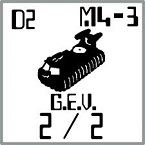Tankerace
Posts: 6400
Joined: 3/21/2003
From: Stillwater, OK, United States
Status: offline

|
I do have aircraft procudion increasing in WPO, for fighters, bombers, flying boats, carrier planes, everything. My point about the C1 is with a light payload and 6 passenger capacity, the only use it would be (in combat) would be liason transport, or as an air ambulance (of which some C-1s were used). However, the game engine cannot handle this.
As to aircraft carriers, as far as I can tell For Japan, the Amagi/Tosa conversions were done only after the Washington Treaty cancelled their construction. Kaga and Tosa were very near completion (Tosa was already launched), and while it is debatable, it is my contention they would never have been converted to carriers, in view of the battleship admirals. Around 1918, there was some talk of converting one or more of the Lexingtons into aircraft carriers. However, it would seem to me (and again, this is my take) that if the Amagi's and Tosas were completed, then to match them the Lexingtons would be aswell.
Now, what I did find in my research is plans to convert fast merchants or liners into aircraft carriers, should war break out. There were such plans on both sides. The problem? Such ships as deemed "suitable" for conversion wouldn't come in to service until the late 1920s, and by the time they could be converted, WPO would be over.
Now, what I have done is given each side two additional carriers, based along these designs. However, I have made a concession, reducing a the aircraft capacity but giving a lsightly faster speed.
The total carriers in WPO: 4 Japanese, 3 American, 3 British. As to taking a CL or CA to a carrier, I thought about it too. But CAs, while lare enough, were too slow, and while they could keep pace with the battle line, they couldn't scout ahead (and Japan didn't posses any new CAs, only older ones that would be unsuitable). Light and Scout cruisers of the time, while fast enough, were to small and cramped. While they could launch and recover aircraft (as proved by The Pennsylvania, Birmingham, and Seattle), they would be too cramped to store aircraft, or at least any resonable compliment.
I weighed all of this very carefully. Of converted cruisers, the only effective means they could do is a Seattle style conversion with a light landing deck built over the after turret (but to fraile for "modern" aircraft, and mount a small (4-6) seaplane contingent. I do not believe, given the battleship mentality of the time (especially if we look at no Washington Treaty, and no reason to look away from the BB) that big gun admirals would justify such a conversion.
It is also my contention that the Lexingtons and such wouldn't be converted during a war, as such conversion have almost always been stopped for favor of new construction. So, the lighter, merchant carriers seemed in my eye to be the best way to go.
Now, if WPO was set in the 1930s, with faster cargo ships and liners, there would definately be more carriers. But in the 1920s, the bases for them didn't exist, and with no Washington Treaty, politically, the battleship admirals would have fought tooth and nail to keep their new toys from being turned in to "military experiments". Remeber, even in 1921, the aircraft was regarded as a harmless toy, and even Billy Mitchell sinking the Alabama and Ostfriesland didn't completely shake that foundation.
The other draw back to mass carriers for scouting is short range. The little carrier aircraft can usually go no more than 3 hexes, and the carriers themselves no faster than the battle line. Now since by the time they would come in to service the big dreadnoughts are all refitted with catapults and have squadrons of their own, and as to fleet protection, the Japanese get a squadron of Sopwith Pups or Gloster Sparrowharks which can fly off platforms on battleships, and the Americans get 4 squadrons of Battleship Fighters, Vought Fu-1s with floats that can fly off battleship catapults. In my eye, with all this, the need for several carriers would have been filled by the few conversions available.
These were just the conclusions I drew from the research I did, and why I had decided to abandon carrier conversions.
_____________________________
Designer of War Plan Orange
Allied Naval OOBer of Admiral's Edition
Naval Team Lead for War in the Med
Author of Million-Dollar Barrage: American Field Artillery in the Great War coming soon from OU Press.
|
 Printable Version
Printable Version
















 New Messages
New Messages No New Messages
No New Messages Hot Topic w/ New Messages
Hot Topic w/ New Messages Hot Topic w/o New Messages
Hot Topic w/o New Messages Locked w/ New Messages
Locked w/ New Messages Locked w/o New Messages
Locked w/o New Messages Post New Thread
Post New Thread